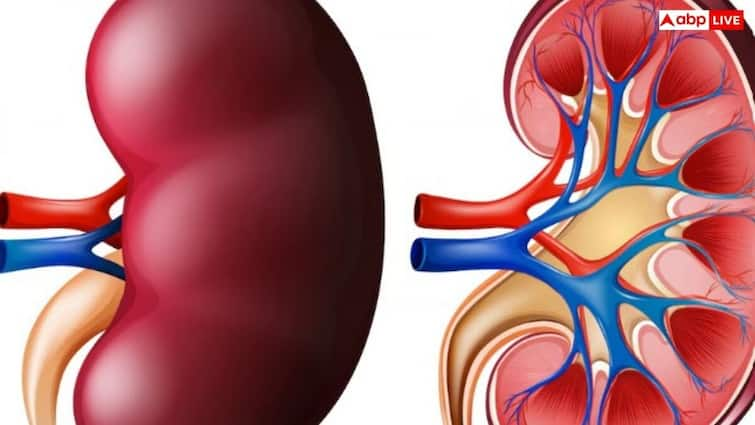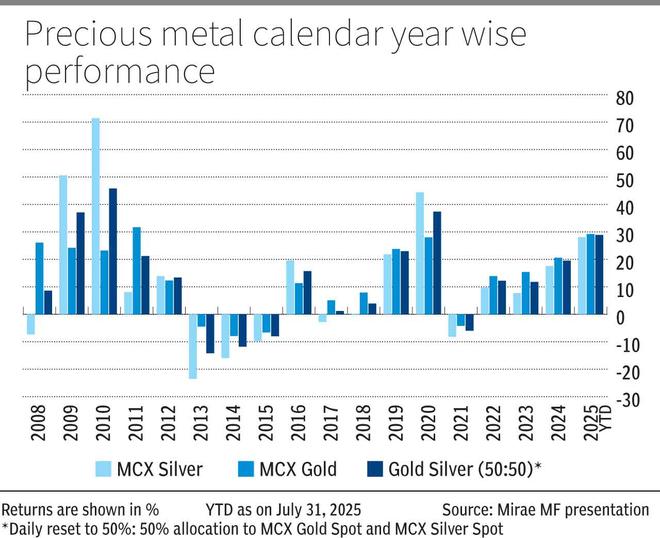Gold calms nerves, silver stirs excitement. A new fund aims to bottle both into one tax-efficient package, blending strengths across cycles. Mirae Asset Investment Managers has launched the Mirae Asset Gold Silver Passive Fund of Fund (FoF), which will dynamically invest in units of its Gold and Silver ETFs. The NFO closes on August 25. Here is a detailed review:
Metal mettle
Gold prices are shaped by structural and tactical forces. They gain when the US Fed eases rates, the dollar weakens, or as geopolitical tensions arise and central bank buys support demand. Domestic and Chinese demand, along with net long build-up, also play a role. Growth in the assets under management of global gold ETFs further reflects and fuels investor interest.
Silver has been in a persistent supply deficit in recent years, with industrial demand consistently outpacing production. From a small surplus in 2016–2018, the market swung to deep deficits, peaking at 263.5 million ounces in 2022 and staying negative through 2024. The estimated shortfall for 2025 is around 118 million ounces. This chronic undersupply, driven by industrial use in solar and electronics, could support long-term price normalisation.
Timing, DIY problems
Silver has shown extremely fat tails in its return distribution, meaning it has a higher probability of both large gains and large losses over a 12-month period. Gold’s moderate tails protect better on the downside, but low volatility doesn’t guarantee steady compounding. It spent 11 years post-1990 and six post-2012 with negative annual returns despite limited drawdowns. Recoveries from 15-20 per cent declines have taken around 1,000 days on average. This creates the risk of holding an asset that appears safe, but fails to grow for long stretches. So, an FoF using data-driven signals to dynamically allocate between metals without emotional or ad hoc decisions can be an alternative approach.
Also, an FoF is more tax efficient than handling allocations yourself. In a Do-It-Yourself mode, rebalancing gold and silver ETFs can trigger short-term capital gains tax, reducing compounding. For example, ₹10 lakh invested 50:50 in March 2006 with semi-annual rebalancing would grow to ₹90 lakh without tax, but only ₹74.47 lakh with a 30% tax on each rebalance. In an FoF, rebalancing happens without a tax event until redemption.
Strategy
The key factor is how the fund allocates between gold and silver. The fund starts with a base weight of 50 per cent in each metal. However, this initial intent is not a fixed split forever.
Allocation can tilt towards gold or silver based on indicators. First are short- and long-term trends in the gold-silver ratio and metal momentum. Second are macro and fundamental factors such as global interest rates, inflation, dollar movement, central bank buying, geopolitical tensions, and each metal’s supply-demand. These cannot be precisely quantified. The third step is regular rebalancing.
Gold and silver prices show a strong positive correlation. Holding only gold risks missing silver rallies; only silver risks steep falls in slowdowns. By blending and adjusting, the fund tries to smooth out extremes and capture more opportunities.
However, there are also downsides. The signals that guide allocation are not perfect. There will be times when the fund may tilt towards the weaker metal because indicators can be misleading. Dynamic allocation can lag if sharp moves occur before the fund adjusts. And while tax efficiency is a benefit, the FoF structure adds an extra layer of cost as you pay the expenses of the FoF and the underlying ETFs (31-35 bps).
This is not the first product of its kind. Edelweiss Gold and Silver ETF FoF and Motilal Oswal Gold and Silver ETF FoF already exist. The basic concept is the same, but they follow a broadly static allocation (50:50 or 70:30). The other differences are in the cost structure (14-24 bps expense for rival offerings) and the tracking efficiency of the underlying ETFs. Mirae’s gold and silver ETFs have a longer live track record compared to some peers.
Units will be allotted on August 29, and the scheme will reopen for continuous sale and repurchase from September 1. The minimum investment during the NFO is ₹5,000 and SIPs can start from ₹99 a month after the NFO. Ritesh Patel will manage the scheme. If you redeem within 15 days of allotment there is an exit load of 0.05 per cent. After that there is no load.
Our take
Domestic gold and silver have each delivered over 42 per cent in the past year, spurring investor interest.
Mirae Asset Gold Silver Passive FoF offers a single, structured route to own both metals, with allocation driven by technical, macro, and fundamental factors. A minimum holding period of three years is sensible. It works better as part of a broader asset allocation where you want to diversify equity and debt with precious metals.
If you already own gold or silver ETFs, and can manage shifts, you may not need this FoF. But if you want both metals with professional, tax-efficient allocation, it can be useful. If your multi asset fund already gives you enough gold and you do not want silver, this FoF is unnecessary. If you want meaningful silver exposure alongside gold, this FoF can fill that gap.
Published on August 16, 2025


















